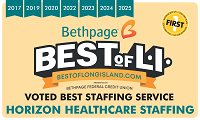Assessing the Progress on the Future of Nursing
Nurses make up the largest segment of the health care profession, with 3 million registered nurses in the United States. Nurses work in a wide variety of settings, including hospitals, public health centers, schools, and homes, and provide a continuum of services, including direct patient care, health promotion, patient education, and coordination of care.
In 2010, The Institute of Medicine (IOM) released the report The Future of Nursing: Leading Change, Advancing Health, which made a series of recommendations pertaining to the roles for nurses in the new health care landscape. Over the next 5 years, the IOM was to assess progress made on implementing The Future of Nursing report recommendations and identify areas that should be emphasized.
Here are some of the findings of assessing the progress of the IOM report on the future of nursing:
Assessing the progress on Removing the Barriers to Practice and Care.
Continued work is needed to remove scope-of-practice barriers. The policy and practice context has shifted since The Future of Nursing report was released in 2010.
This shift has created an opportunity for nurses, physicians, and other providers to work together to find common ground in the new context of health care, and to devise solutions that work for all professions and patients.
To help improve this progress, the report suggests that nurses build on the successes and work with other health profession groups, policy makers, and the community to build common ground around removing scope of practice restrictions, increasing inter-professional collaboration, and address other issues to improve healthcare practice in the interest of patients.
Assessing the progress on Achieving Higher Levels of Education
The RN population is now shifting towards becoming increasingly BSN (earning your bachelor’s degree in nursing). This shift may lead to unintended consequences for those nurses who do not achieve higher education. These consequences may include employment, earning power, skills, and roles and responsibilities. A lot of organizations in New York are now looking for registered nurses with their bachelor’s degree instead of just their associates degree.
It is recommended that the nursing education community and state systems of higher education continue efforts aimed at strengthening academic pathways for nurses toward the baccalaureate degree – both entry level baccalaureate and baccalaureate completion programs. To maximize the potential value of their additional education, nurses should be encouraged to pursue these degrees early in their careers.
Campaigns should encourage nursing organizations, education programs, and professional societies, as well as individual nurses, to make lifelong learning a priority so that nurses are prepared to work in evolving health care environments. Lifelong learning should include continuing education that will enable nurses to gain, preserve, and measure the skills needed in the variety of environments and settings in which health care will be provided going forward, particularly community-based, outpatient, long- term care, primary care, and ambulatory settings.
Assessing the progress on Promoting Diversity
This report shows that there is an issue of diversity in the nursing workforce. Community colleges, associate’s degree programs, and baccalaureate completion programs provide important pathways for diverse and disadvantaged students to enter the nursing profession; these educational pathways need to be maintained and strengthened. The high proportions of underrepresented minorities among LPNs/LVNs and other health occupations requiring less education than RNs provides a potential pool of candidates for a more diverse nursing workforce.
It is recommended that campaigns should continue to emphasize recruitment and retention of a diverse nursing workforce as a major priority.
To read the full report –> http://iom.nationalacademies.org/Reports/2015/Assessing-Progress-on-the-IOM-Report-The-Future-of-Nursing.aspx

